Best AI art generators 2024: top tools for creating AI artwork
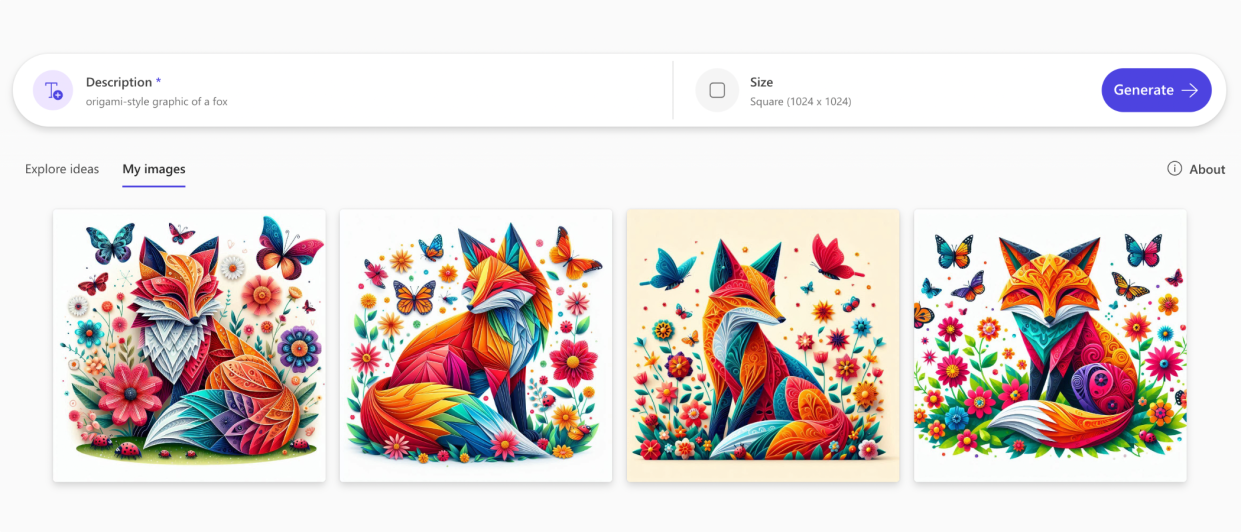
With the best AI art generators, what once took a graphic designer hours to fine-tune can now be produced in a matter of minutes. Love them or loathe them, these programs are here to stay. And in the space of just a year or so, the quality of their output has improved dramatically.
With many of these AI tools now in their second or third iterations, they’re increasingly capable of creating incredible artwork based on nothing but a few lines of text. While it’s unlikely that AI art generators will ever fully replace digital artists and creators, they’ve already made headlines with photorealistic images good enough to win competitions – and fool the untrained eye.
Arguably more exciting that mimicking real images is the ability of these AI tools to produce surreal, stylized visuals – or to reimagine existing works in a new way. Keen to give it a try? We’ve tested some of the best AI art generators and shared our experience below. We’ve explained how to use them, what they’re good at and who each program might be best for – and we’ve also included examples of the kind of work that they can produce, so you can judge for yourself.
Best paid app for beginners
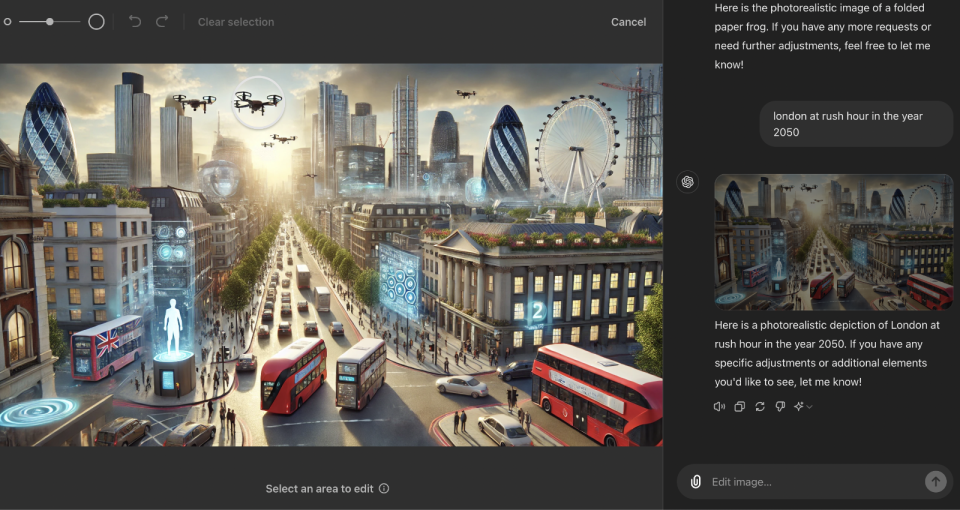
Dall-E 3 (OpenAI)
The best paid AI art generator for beginners
Super easy to use
Quickly produces usable images
Encourages creativity
Specific prompts not always followed
$20 a month subscription
OpenAI’s Dall-E was the first AI art generator to attract widespread attention. Its third iteration pushes the boundaries even further, processing complex text prompts to produce dynamic visuals in a range of styles. Selective editing tools also make it even easier to fine-tune AI-generated results.
In testing, we found this to be one of the most user-friendly AI art generators. Accessed through a ChatGPT Plus subscription ($20 a month), creating images is as simple as typing word prompts into the text box. Wait times can vary, but the result usually appears within 30 seconds. Unlike Dall-E 2, dimensions are no-longer constrained to 1024x1024: you can now request a landscape (1024x1792) or portrait (1792x1024) image, increasing its versatility.
You can generate further variations by repeating or tweaking your text prompt. To edit a particular image, simply open it and type into the “Edit image…” text box. That’s also where you can use the select tool to paint over a specific area in the image, to target your edit requests.
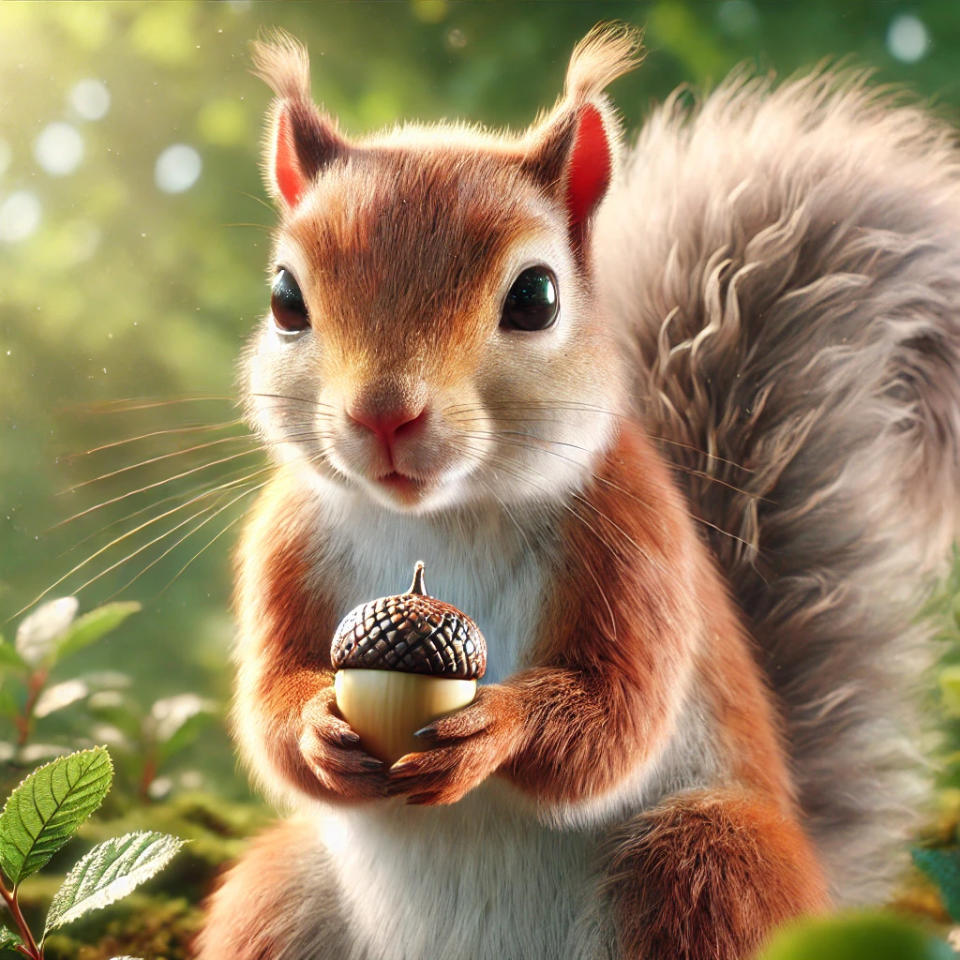
On the whole, results were both impressive and usable. Dall-E 3 is capable of producing engaging images in a number of styles. In our experience, it defaults to a stylized photorealistic look. This is no bad thing: images are discernibly computer-generated, but the aesthetic tends to be rich and vibrant. That said, it also fared well enough when our prompt specified folded paper and hand-drawn illustration as the aesthetic
We found Dall-E 3 most reliable when producing graphics based on comprehensive text prompts, especially those that told a story. It was less effective at following specific requests, such as a prompt to remove buses from a street scene, or to add a peacock to a jungle visual.
The real beauty of Dall-E 3 is how it encourages you to experiment, both in the creativity of your original prompt and the text-based editing process, making it quick and easy to produce quality AI-generated artwork. Its additional tools, including the ability to upload images as source material for art styles, also offer plenty of scope for those who want to dig deeper into Dall-E 3’s abilities.
While genuine photorealism isn’t its strongest suit, we could see Dall-E 3 replacing subscription to a stock photo service, particularly if you need quick access to specific visuals for marketing or social media.
Best for advanced users
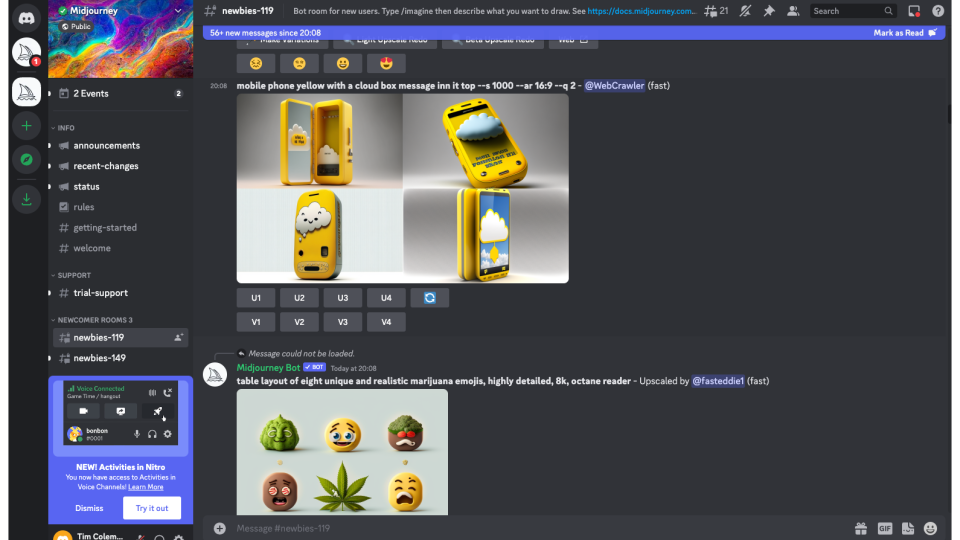
Midjourney
The best AI art generator for advanced users
Powerful AI tool
Generates photorealistic images
Chatroom format encourages creativity
Only available through Discord
User experience confusing at first
No more free trial
Midjourney is integrated into Discord, a social platform which can be accessed via your web browser or downloaded as an app for Windows, Mac, iOS and Android. For those already familiar with Discord, this makes it an easy way to start creating AI-generated images. For those who aren’t, the user experience can feel more complex than Dall-E 3.
In the Discord web app, you join a chat room where you can view the creations of other users on a live feed. To create your own, you type /imagine, followed by your choice of word prompts in the message thread. Around a minute later, your resulting image appears in the feed, with four options condensed into a 1024x1024 image that can be opened in the browser and downloaded.
Expand the resulting image to see upscale and variation options for each of the four images. For example, selecting U1 upscales the top-left image to a single 1024x1024 pixel image, while V4 prompts a further four variations of the generated image.
The process is fiddlier than other generators, but you’re more likely to fine-tune to a satisfactory result quicker: those variations of an image maintain attributes of the original, but in a portrait for example, might include a slight change in facial expression.
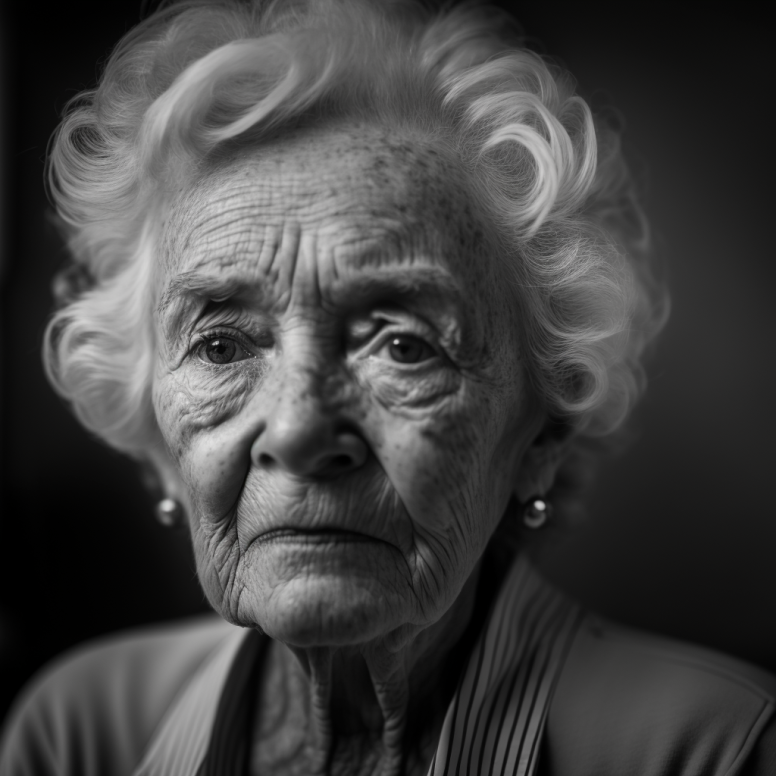
It all takes some getting used to, and the presence of other user’s creations has its pros and cons. In its favor, the social side to Discord can be inspiring. On the downside, the constant flow can be distracting and frustrating if you simply want to get on with creating, without losing your own creations in the chat room ether. There’s also the risk of being exposed to unwanted content.
In terms of image quality, Discord has come on leaps and bounds since it was first released, and is capable of generating the most photorealistic output of the art generators featured here. Images have superior clarity, sharpness and saturation. That said, the app does struggle to keep it real all the time: no amount of word prompts seem able to override the algorithm that favors an overly saturated golden-hour glow in landscapes.
Still, on platforms such as Instagram, where a lot of photography is already hyper-stylized, Midjourney images can fit right in. We’ve already seen viral accounts turn out to be AI frauds. If the end image being high-clarity is all that matters, Midjourney is the most powerful tool available. Plans start at $10 per month, though you’ll need to spend more to raise job limits and increase GPU time. This is steep compared to the competition, but still good value for those who are serious about embracing AI image generation.
Best value
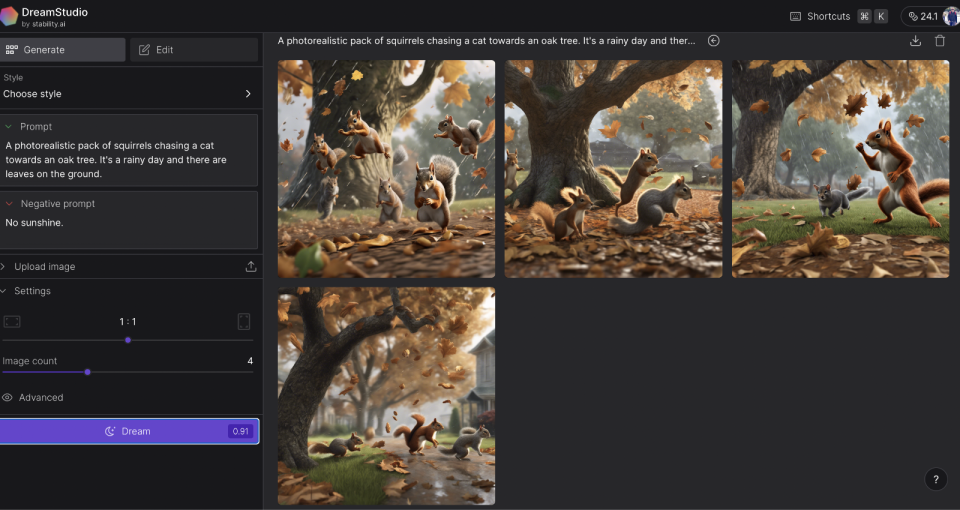
DreamStudio (Stability AI)
The best-value AI art generator
Arguably the best all-rounder
Can be used for free
Uses latest SDXL model
A little more complex than Dall-E 3
Can struggle with photorealistic images
Limited archiving capabilities
Stable Diffusion is an art-generation model available under various guises. Its simplest form is the Stable Diffusion web app, but there’s more depth to be found in Stability AI’s DreamStudio beta web app. Earlier this year, it was upgraded to use SDXL v1.0, the latest version of the image generation model.
In terms of ease of use and quality of output, we found that DreamStudio sits somewhere between OpenAI’s Dall-E 3 and Midjourney on Discord. It has a standalone user interface like Dall-E 3, where you can input word prompts and refine the results. There are more options to play with in DreamStudio: you can tweak the scale and dimensions of the output image, for example, as well as the image count and how closely the results stick to your prompt.
The worklow is simpler than Dall-E 3, as all generated images appear in a single feed, rather than grouped by conversation in ChatGPT. Editing options are also less precise. You can add new prompt layers in boxes over the original image, but we found that these don’t integrate seamlessly – and you don’t get the same granular control offered by Dall-E 3’s paintbrush tool.
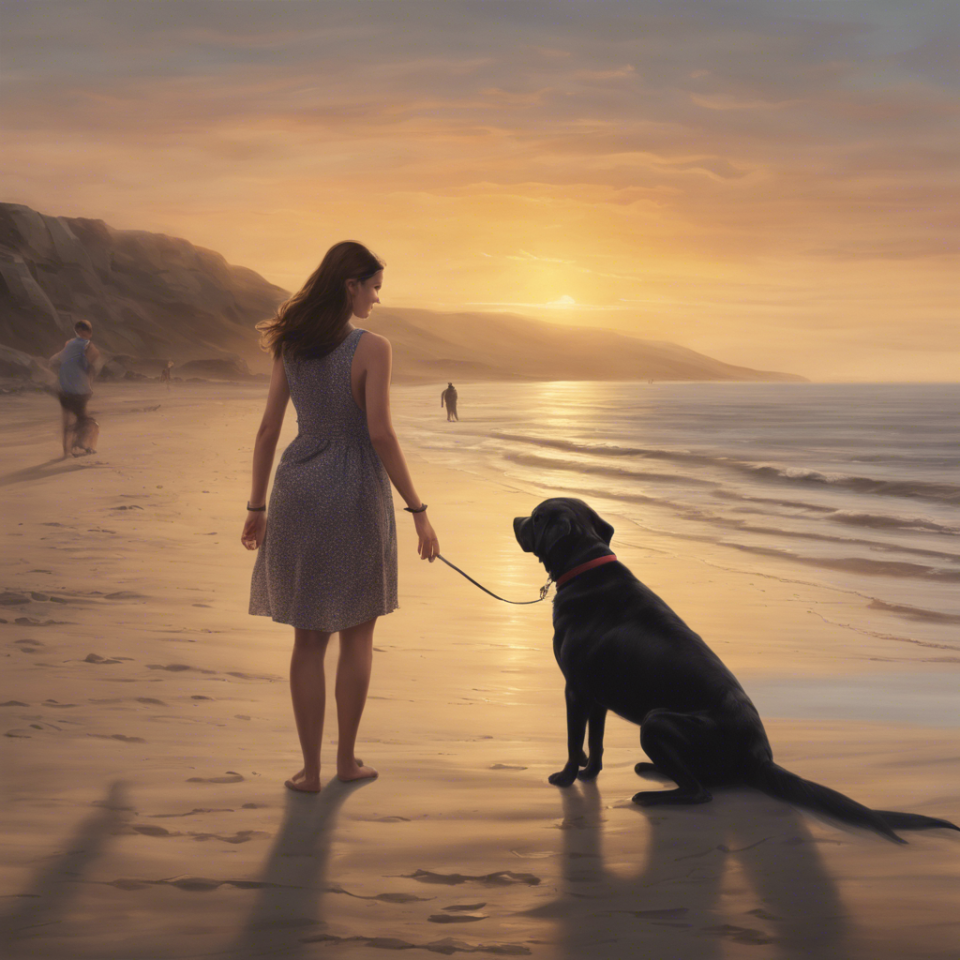
There are similarities in output quality between Dall-E 3 and Stable Diffusion. In our experience, both fall short of Midjourney when it comes to photorealism – although Stable Diffusion’s latest imaging model has improved things. The images that pop up never cease to surprise. Most are surreal, and discernibly computer-generated. More complex prompts often result in unusable results.
For example, the prompt “person walking dog on beach, calm seas, footprints in the sand, sunrise”, rendered an array of results, including multiple dogs, some with missing limbs, a man walking on water, and so on. In contrast, the simple prompt “photorealistic portrait of a person on a beach” generated images that, while clearly not photorealistic, had more artistic quality.
You get 25 free credits when you sign up for DreamStudio, enough for around 125 images. If you have each prompt set to generate four results, you’ll soon use these. You can purchase 1,000 more for $10, which gives you another 5,000 or so images to play with. This means barrier to entry is low with DreamStudio. You can start using it for free and top up your credits when you need – although power users could quickly find that costs rack up.
Best free photorealistic editor
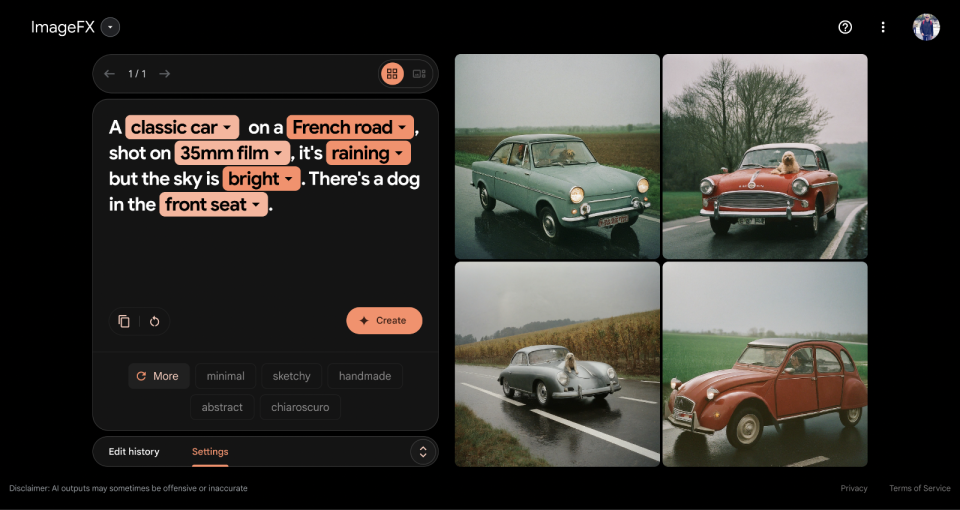
ImageFX (Google)
The best free photorealistic editor
Incredibly intuitive interface
High degree of photorealism
Useful library feature
Limited to square images
Can’t use images as prompts
Built around Google’s Imagen 2 model, ImageFX is an experimental AI image generator that’s available through Google’s AI Test Kitchen. From its intuitive interface to the quality of its results, we think it’s right up there with the best AI generators in this list.
As ever, it all starts with a word prompt. Describe what you want to see and Google will take a few seconds, before presenting you with a set of four square image variations based on your text. The consistency and quality of these alone sets ImageFX apart. Of all the generators we’ve tested, we found that ImageFX sticks most closely to the given prompt. Different art styles are handled masterfully – from watercolors to pen and ink sketches – while its photorealism is among the very best we’ve encountered in any app.
For example, the prompt, “a classic car on a French road, shot on 35mm film, it’s raining but the sky is bright, there’s a dog in the front seat” generated images of exactly that – which, without looking too closely at the garbled details on the number plate, could easily pass for a genuine vintage photo.
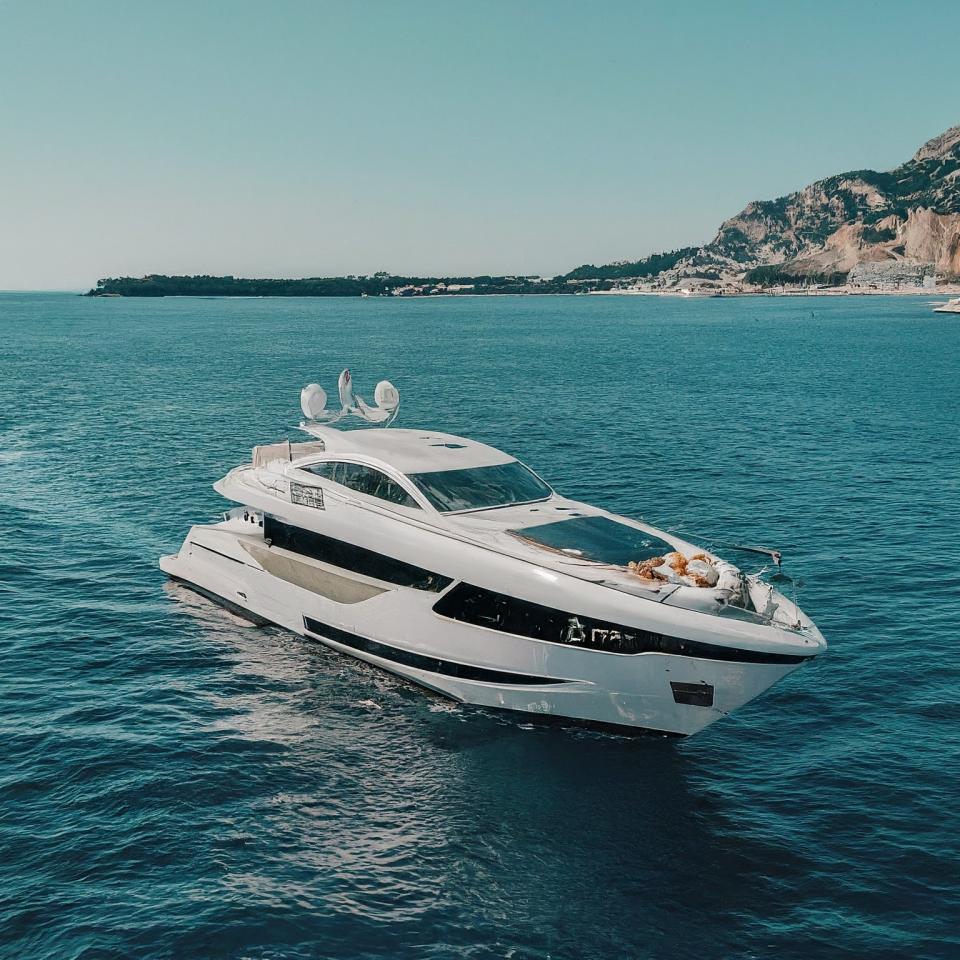
What’s more, ImageFX has one of the most usable interfaces of any AI image generator. Google automatically identifies the key elements of every prompt, converting them into drop-downs that give you options for refining your instructions. For “photo”, for example, alternatives were “painting”, “drawing” and “sculpture”. ImageFX will also offer broader suggestions for art styles beneath your prompt, from “minimal” to “sketchy”. This is more than just hand-holding: we found these suggestions genuinely helpful in stimulating new ideas.
Editing tools are similarly impressive. You can mask off particular areas of an image using a brush tool before describing any changes you’d like to make. From our time using ImageFX, these edits are routinely integrated very well, depending on the complexity of your prompt.
Its library feature is also comprehensive. During a session, you can tab through your recent prompts. To look at images you’ve previously generated, navigate to My Library by clicking your account image. Here you’ll find every variation you’ve ever made using ImageFX. Click on one and it’ll load up the full prompt, including the option to refine and edit the image.
There are only two drawbacks with ImageFX, and they’re minor. First, you’re limited to square images. Second, you can’t use images as prompts. But for a free generator that does so much so well, it’s very hard to find fault.
Best simple app for renderings
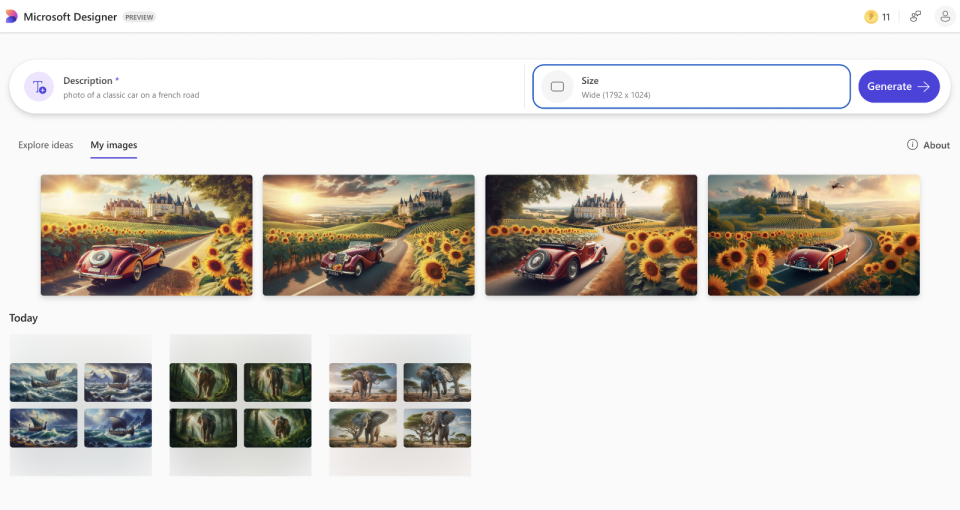
Image Creator (Microsoft Designer)
The best simple app for digital renderings
Foolproof interface
High-quality digital renderings
Not good at photorealism
Limited editing tools
Charge for additional boosts
An AI art generator from Microsoft, Image Creator is a simple web-based app built around Dall-E 3. In essence, it strips back the complexity of ChatGPT, instead offering a foolproof solution for generating dream-like AI images. It’s free, with the option to pay a monthly subscription for a bigger prompt allowance.
Its streamlined approach means Image Creator is the most user-friendly AI art generator in this list. Load up the web interface and you’re given two options: a text-based prompt box and three sizes to choose from. These are square (1024x1024), portrait (1024x1792) and wide (1792x1024). Type your prompt, hit generate and you’ll be given four image variations in a matter of seconds.
A key takeaway from our testing is the graphic quality of images generated by Image Creator. Seemingly even more so than when you access Dall-E 3 through ChatGPT Plus, Microsoft’s solution appears to actively lean into the computer-generated look. Images have a dream-like quality with that textbook AI “glow”. Based on our tests, this can’t be overridden, even if you specify “photo” in the prompt.
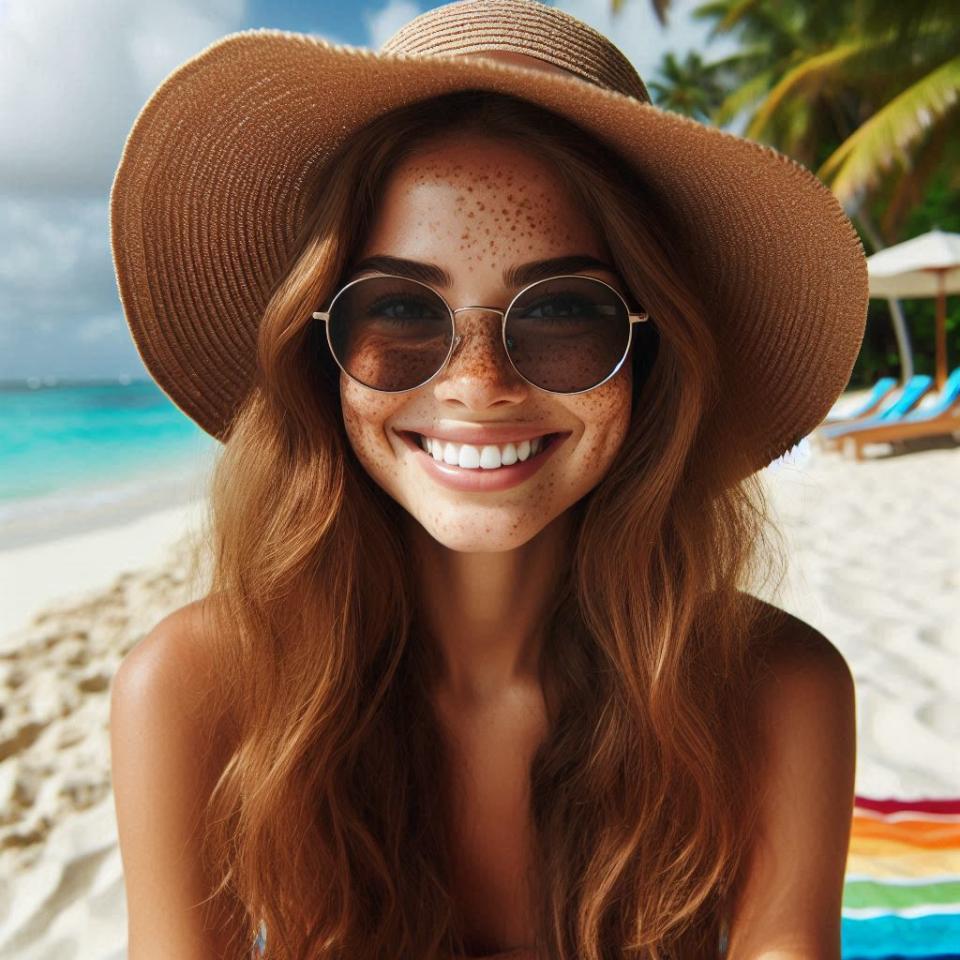
As a result, Image Creator scores poorly for photorealism. On the other hand, it scores highly for creating fun and colorful conceptual images that generally stay true to the details of your prompt. Generated images often have an element of the surreal about them, from oversized sunflowers to uncanny textures on a Labrador’s coat. Yet by leaning into this slightly unreal aesthetic, Image Creator actually steers clear of uncanny valley. A prompt for “portrait of a person smiling on a beach” delivered an image that was clearly a digital rendering – albeit a very good one – and less creepy as a result.
If you take Image Creator as a tool for rapidly creating digital visuals based on your text prompts, it’s remarkably effective. In line with its straightforward approach, you don’t get the deep, prompt-based editing options offered by other apps. To adjust images, you have to open them in Microsoft Designer, where you can use tools such as generative erase and background removal.
What holds Image Creator back for beginners is the limit on “boosts”. Per day, you get 15 prompts or “boosts” – or 60 images. If you want to use more, you’ll need to take out a Microsoft Copilot Pro subscription for $20 per month. This gives you 100 boosts per day, as well as giving you priority access to GPT-4 Turbo. That’s the same cost as a subscription to ChatGPT Plus, which has a greater depth of features for image generation and would be our choice for a paid subscription. But for its 15 free boosts per day, Image Creator is well worth a look.
What is an AI art generator?
An AI art generator is a computer program which creates digital images – such as illustrations, paintings or photos – from word prompts. Users provide text-based instructions for an image, describing what they’d like to see and in what style. These preferences are processed by artificial intelligence to create a rendering.
How does an AI art generator work?
In simple terms, AI art generators look at a lot of art, learn from it and use that “knowledge” to create new art.
Images are generated using a neural network – a series of algorithms which seek to recognize relationships in data, to mimic how the human brain works. To do this, the algorithms (or models) are trained on millions of images taken from the internet. It studies these to understand details, styles and patterns.
When you ask an AI art generator to create a new image, it draws on this data to try and make something new. What’s more, AI improves with user feedback. If you report that something doesn’t look quite right in an image, or ask it to refine something, it will add that feedback to its bank of data. Over time, quality improves and results become more accurate and reliable.
Are AI art generators ethical?
Controversy surrounds AI art generators. There’s uncertainty around how images are sourced, and where from. To give one example Getty’s legal proceedings against Stability AI, claims that the AI company “unlawfully copied and processed millions of images protected by copyright.”
At the user level, there have been repeated examples of the use of AI to generate photorealistic images not being disclosed, and of the manipulative use of AI generated images for fraud; plus of course the proliferation of ‘deep fake’ images, leading us to question what is and isn’t real.
Looking for more? We've tested out the best AI image generators and the best AI tools.


